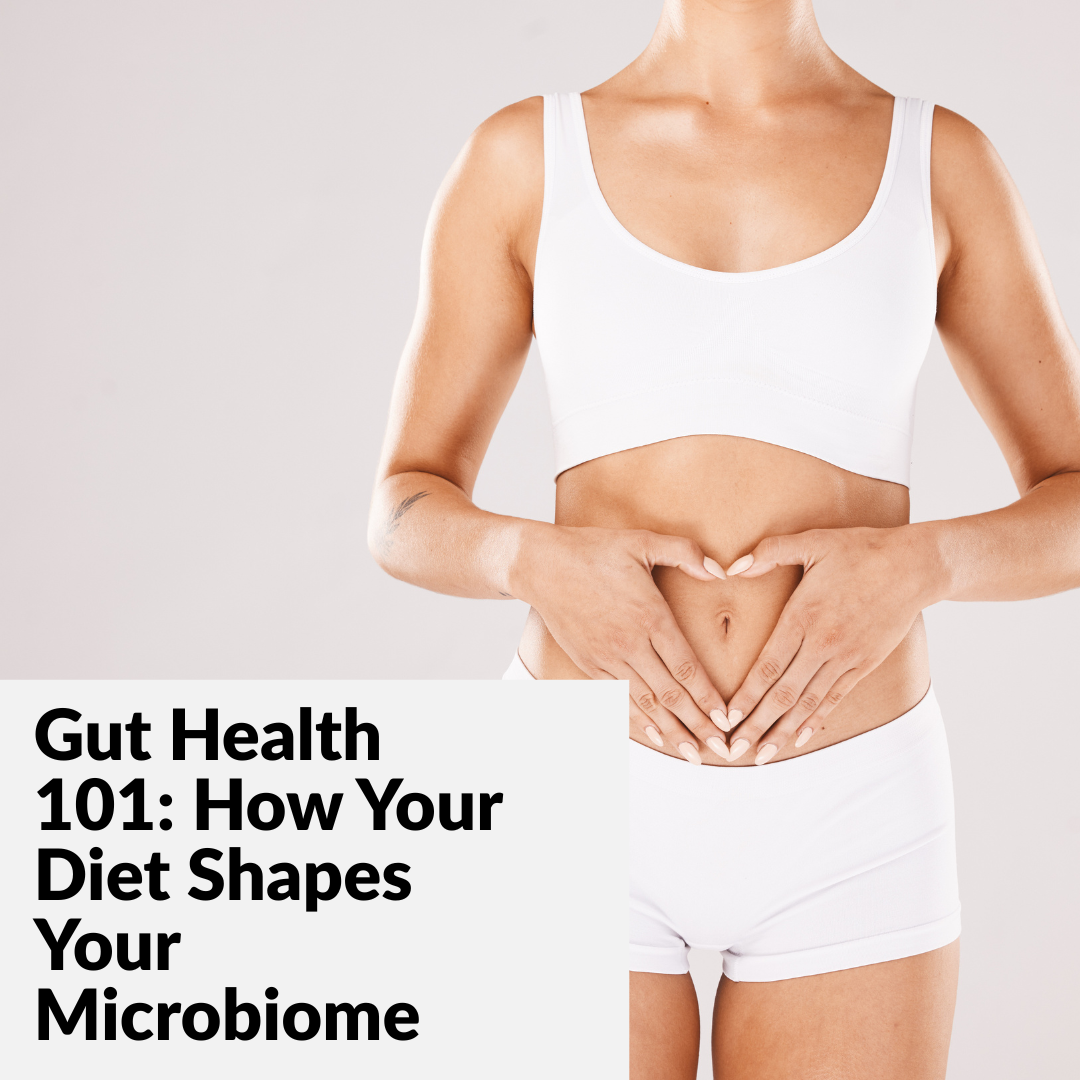
When it comes to feeling your best, gut health is one of the most underrated pieces of the puzzle. From digestion to mood, immunity, and even energy levels, your gut microbiome plays a major role in how your body functions day to day. And guess what? What you eat has a massive impact on how that microbiome thrives—or struggles. Let’s break down how your diet shapes your gut and how you can support it with simple, practical strategies.
🌿 What Is the Gut Microbiome?
Your gut microbiome is a vast community of trillions of bacteria, fungi, and other microorganisms living in your digestive tract—mostly in the large intestine. Think of it as a microscopic ecosystem that helps digest food, absorb nutrients, regulate your immune system, and even communicate with your brain via the gut-brain axis.
A healthy gut microbiome is diverse, meaning it has many different strains of beneficial bacteria working together. A lack of diversity or an overgrowth of harmful bacteria can lead to bloating, constipation, fatigue, food sensitivities, skin issues, and even chronic inflammation.
🥦 How Diet Shapes Your Gut Health
What you eat either feeds the good guys or gives the bad ones room to take over. Highly processed foods, excess sugar, and low-fiber diets can throw off this balance and lead to gut dysbiosis (an imbalance in the microbiome).
On the flip side, a fiber-rich, whole-food diet creates an environment where beneficial bacteria thrive. This leads to better digestion, stronger immunity, more stable energy levels, and even improved mental clarity.
⚖️ The Probiotic + Prebiotic Duo
If you’re looking to support your gut, these two should be on your radar:
✅ Probiotics
These are the live beneficial bacteria found in certain foods and supplements. They help repopulate your gut with good microbes.
Top probiotic foods to include:
-
Yogurt with live cultures
-
Kefir (fermented milk or water)
-
Sauerkraut and kimchi
-
Miso and tempeh
-
Kombucha
Tip: Rotate your probiotic foods to get a variety of strains.
✅ Prebiotics
These are the fibers and natural compounds that feed your beneficial gut bacteria. You need prebiotics to keep probiotics alive and well.
Top prebiotic foods to include:
-
Garlic
-
Onions
-
Leeks
-
Asparagus
-
Bananas (especially slightly green)
-
Oats and barley
-
Apples
-
Chicory root
Tip: Gradually increase fiber to avoid bloating—your gut bacteria need time to adjust.
💡 Tips for a Gut-Friendly Diet
Here are some easy, sustainable ways to keep your gut in check:
-
Eat a wide variety of plants. Aim for 20–30 different types per week—fruits, veggies, legumes, nuts, and seeds. Diversity in plants = diversity in gut bacteria.
-
Limit ultra-processed foods. Preservatives, emulsifiers, and artificial sweeteners can disrupt the microbiome.
-
Hydrate well. Water helps fiber do its job and keeps digestion moving.
-
Don’t fear fermented foods. A little goes a long way—start with a spoonful of sauerkraut or half a glass of kombucha.
-
Go easy on antibiotics. Only use them when necessary, as they wipe out both good and bad bacteria.
-
Watch your stress levels. Chronic stress alters your gut-brain axis, which can trigger bloating, cramps, or changes in bowel habits.
Your gut is central to your overall health—and your daily food choices have the power to support or strain it. By feeding your microbiome with whole, fiber-rich foods and incorporating both probiotics and prebiotics, you’re not just supporting digestion, you’re building the foundation for long-term wellness.
Want to start small? Try adding one new plant-based food and one probiotic food to your routine this week. Your gut will thank you.
Leave a Comment
You must be logged in to post a comment.
0 Comments